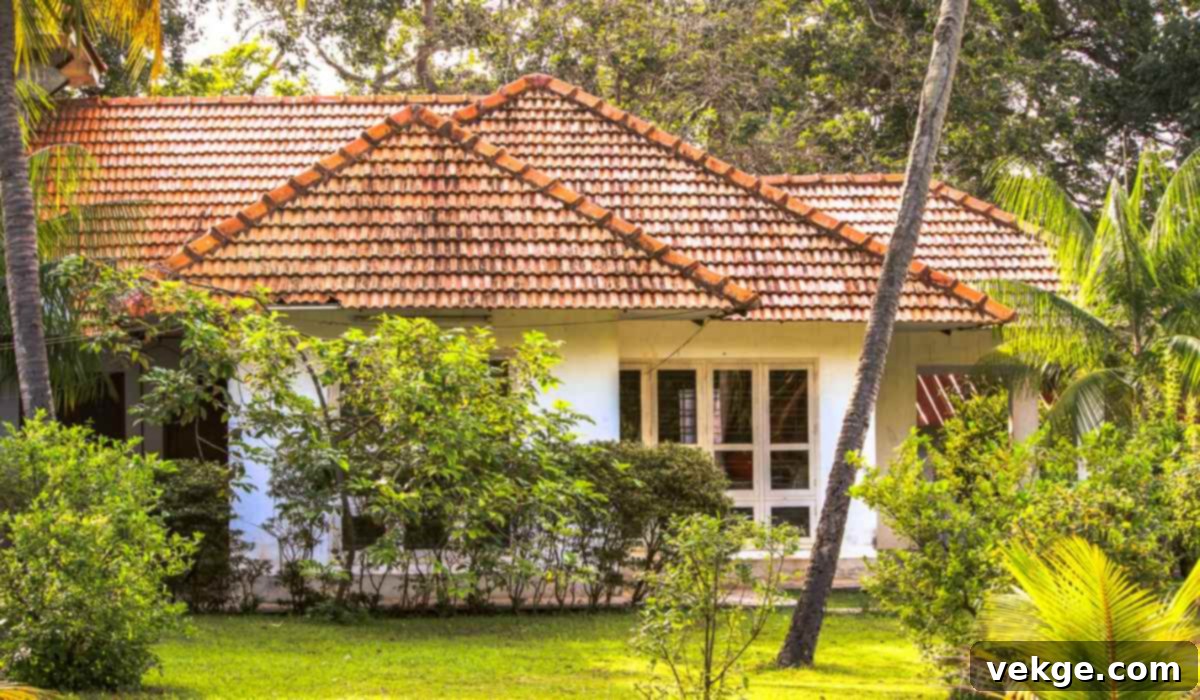The Ultimate Guide to Roofing Materials for Indian Homes: Modern & Traditional Choices
The roof of a house is more than just a cover; it’s a statement of style, a shield against the elements, and a significant investment in a home’s longevity. In India, with its rich architectural heritage and incredibly diverse climate—ranging from the scorching plains to the humid coastal areas and the chilly northern mountains—the choice of roofing material is paramount. From the iconic green roofs of South India to the sleek asphalt shingles seen in bustling metropolises like Delhi and NCR, Indian homes have always showcased a variety of roofing solutions.
Are you embarking on the exciting journey of building your new home, and finding yourself overwhelmed by the myriad roofing options? Or perhaps the exquisite, custom roofing recommended by your architect doesn’t quite align with your budget? This guide is designed to help you navigate the landscape of roofing materials available in India, empowering you to research, compare, and select the perfect roof that marries durability, aesthetics, and cost-effectiveness for your lifelong sanctuary.
Modern India, a vibrant blend of traditional craftsmanship and contemporary innovation, offers an impressive array of roofing choices. This evolution has significantly enhanced the country’s architectural diversity, allowing homeowners to select materials that cater to specific regional climates, aesthetic preferences, and budget constraints. Choosing the right roof means securing your home for decades to come, as ‘home’ truly means ‘forever.’ Stay with us as we delve into some of the best roofing materials that promise to be a reliable and beautiful companion for your Indian abode.
What are the Trendiest and Most Reliable Roofing Materials for Indian Homes?

As we step into a new era, the prospects for Indian architecture continue to soar. The market is brimming with innovative roofing materials, catering to both premium quality demands and budget-friendly needs. However, with an abundance of excellent choices comes the challenge of distinguishing genuine, high-quality products from inferior, copycat alternatives that can disguise themselves as viable options. Therefore, identifying the truly best roofing materials requires careful consideration and expert insight.
Here, we present a curated list of materials that consistently rank among the top choices for Indian homes, balancing performance, aesthetics, and value:
1. Classic and Enduring Concrete Roofs
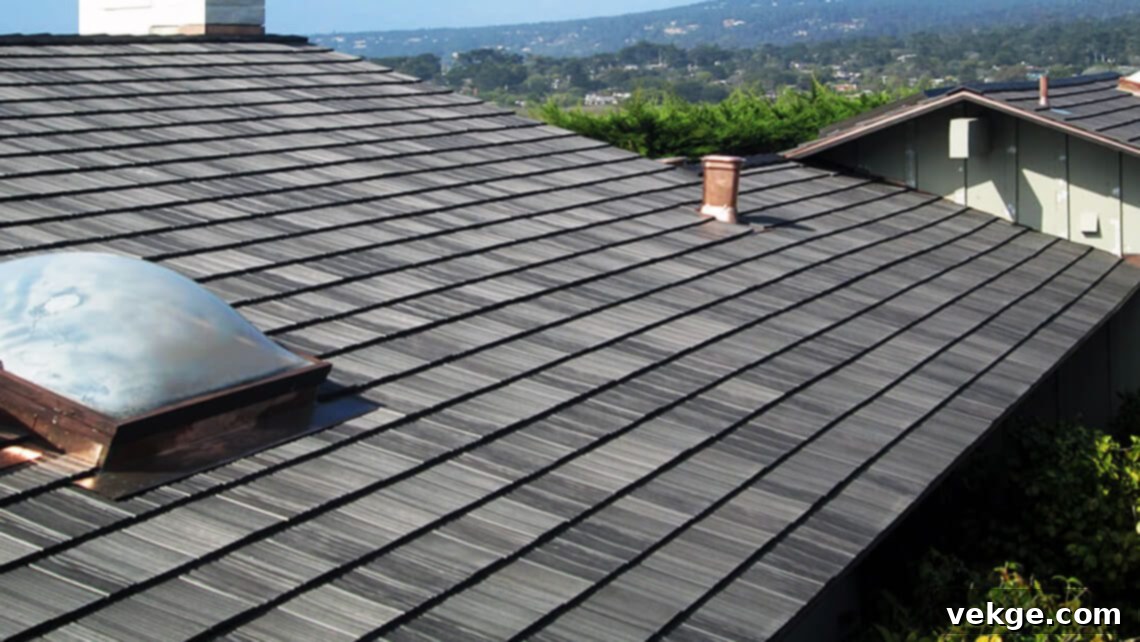
An undeniable emperor in the realm of Indian house construction, concrete remains a timeless and ever-present choice for roofing. Its widespread preference over alternatives like cement-sand mixtures or lime plasters stems primarily from its exceptional durability, particularly against the harsh and varied weather conditions prevalent across India’s plains and plateaus. Concrete roofs, often seen in the form of flat slabs or sloped structures topped with concrete tiles, provide a robust and long-lasting solution.
The versatility of concrete allows it to be molded into various designs, making it suitable for both modern minimalist architectures and more traditional multi-level structures. Its inherent strength provides an excellent protective barrier, crucial for homes facing intense sun, heavy monsoons, and even occasional hailstorms. While often associated with a utilitarian look, advancements in concrete technology and finishing techniques allow for diverse aesthetic outcomes, from smooth, painted surfaces to textured, decorative finishes.
Benefits of Concrete Roofing:
- Superior Structural Strength: Concrete roofs are incredibly solid, contributing significantly to the overall structural integrity of the house.
- Versatile Design: It seamlessly integrates with both flat and tilted roof designs, offering flexibility for various architectural styles.
- High Durability: Known for its longevity, concrete can withstand extreme weather for many decades, making it a truly long-term investment.
- Fire and Waterproof: Its non-combustible nature offers excellent fire protection, and when properly constructed and waterproofed, it provides superior resistance to water penetration.
- Noise Reduction: The density of concrete significantly reduces external noise disturbances, contributing to a quieter indoor environment.
- Budget-Friendly: In many parts of India, concrete is a relatively affordable material, especially considering its impressive lifespan and low maintenance needs.
- Smooth Finish & Styling Potential: A smooth concrete surface allows for various finishing treatments, including painting, tiling, or even green roof installations.
- Temperature Control: Concrete’s thermal mass helps in regulating indoor temperatures, keeping homes cooler in summer by absorbing heat slowly and releasing it overnight, and warmer in winter by retaining heat.
Drawbacks of Concrete Roofing:
- Vulnerability to Weathering: Exposed concrete areas can weaken over extended periods due to continuous exposure to sun, rain, and temperature fluctuations, potentially leading to cracks if not maintained.
- Water Leakage Potential: Without proper waterproofing membranes and regular maintenance, concrete roofs can be prone to water leakage, particularly at joints or due to cracks.
- Heavy Weight: Concrete is a heavy material, requiring a robust underlying structure, which can increase construction costs.
- Installation Time: Curing concrete takes time, which can extend the overall construction timeline compared to some other roofing options.
2. Trending and Aesthetically Pleasing Asphalt Shingles
In contemporary Indian architecture, there’s a growing inclination towards roofing structures that are both minimalistic and visually striking. Asphalt shingles have emerged as a modern hero in this regard, largely due to their eye-catching, dimensional appearance that can mimic more expensive materials like slate or wood. Crafted from a combination of asphalt and fiberglass, these shingles are both remarkably lightweight and exquisitely sculpted, offering a sophisticated finish.
Asphalt shingles are particularly appealing for their affordability and their effectiveness in minimizing heat absorption during the scorching Indian summers, contributing to cooler interiors. Their ease of installation also makes them a popular choice for new constructions and renovations alike, especially in urban and suburban areas where quick and efficient building processes are valued. They represent a blend of traditional appeal with modern manufacturing advantages.
Benefits of Asphalt Shingles:
- Extended Warranty: Many asphalt shingle products come with warranties extending up to 30 years, signifying their long-term reliability.
- High Wind Resistance: Designed to withstand higher wind speeds, they offer excellent protection against strong gusts, common during monsoon seasons or storms.
- Easy and Quick Installation: Their lightweight nature and standardized sizing make them relatively straightforward and quick to install, reducing labor costs and construction time.
- Variety in Aesthetics: Available in a vast array of sizes, shapes, and colors, asphalt shingles provide immense flexibility for homeowners to match their roof to their home’s architectural style and personal taste.
- Cost-Effective: Generally more affordable than many other roofing materials, both in terms of material cost and installation.
- Good Heat Reflection: Lighter-colored asphalt shingles can help reflect sunlight, reducing heat transfer into the home during hot weather.
Drawbacks of Asphalt Shingles:
- Non-Recyclable: A significant environmental concern is that asphalt shingles are typically not recyclable, contributing to landfill waste.
- Hail Damage Susceptibility: While resistant to many elements, heavy hail can cause significant damage, leading to cracks or punctures.
- Reduced Winter Warmth: Their property of minimizing heat absorption can make homes cooler in winter months, potentially requiring more heating.
- Shorter Lifespan than Premium Options: While durable, their lifespan is generally shorter compared to metal or tile roofs under optimal conditions.
- Moss and Algae Growth: In humid climates, asphalt shingles can be prone to moss and algae growth, which requires periodic cleaning to maintain aesthetics and integrity.
3. Majestic and Enduring Metallic Roofs
For centuries, metallic roofs have been celebrated for their exceptional strength and durability, earning them the reputation as the “Iron Man” of dwellings. Their inherent resilience makes them an outstanding choice for protecting homes, capable of withstanding the test of time and severe weather conditions. Among various metals, steel is particularly favored as a roofing material in India due to its affordability and adaptability, easily shaped into elegant strips, durable tiles, or expansive panels.
Beyond steel, other metals like copper, aluminum, and tin are also utilized, each bringing unique benefits. Copper offers unparalleled longevity and a distinctive patina that develops over time, while aluminum is lightweight and highly resistant to corrosion. These metallic surfaces excel at reflecting sunlight, which significantly contributes to keeping interiors cooler and more airy, a crucial advantage in India’s hot climate. Metallic roofs also offer a sleek, modern aesthetic that complements contemporary architectural designs.
Benefits of Metallic Roofs:
- Exceptional Durability and Longevity: Metal roofs are highly durable, often lasting upwards of 50 years, and sometimes even more with proper maintenance.
- Minimal Maintenance: They require very little maintenance over their lifespan, making them a cost-effective choice in the long run.
- Superior Weather Resistance: Highly resistant to severe weather conditions including heavy snow, destructive hail, torrential rain, and strong winds.
- Wide Range of Colors and Finishes: Available in an extensive palette of colors and finishes, allowing for significant design flexibility to achieve desired aesthetics.
- Energy Efficiency: Their reflective properties help reduce cooling costs by deflecting solar heat, making homes more energy-efficient.
- Fire Resistant: Metal is non-combustible, offering excellent fire protection for your home.
- Lightweight: Compared to concrete or traditional tiles, metal roofs are significantly lighter, reducing the load on the home’s structure.
Drawbacks of Metallic Roofs:
- Higher Initial Cost: Metal roofs generally come with a higher upfront installation cost compared to asphalt shingles or concrete.
- Specific Installation Requirements: They often cannot be applied directly over an existing roof made from other materials, typically requiring a raised platform or batten system for proper ventilation and installation.
- Potential for Dents: While durable, certain types of metal can be susceptible to denting from heavy impacts, such as large hail or falling debris.
- Risk of Rusting: If the protective coatings are compromised, certain metals, especially steel, can be prone to rusting over time, particularly in coastal or humid environments.
- Noise During Rain: Heavy rain or hail can produce noticeable noise on metal roofs, though this can be mitigated with proper insulation.
- Expansion and Contraction: Metal expands and contracts with temperature changes, which must be accommodated during installation to prevent buckling or warping.
4. Wonderful and Rustic Wooden Roofing
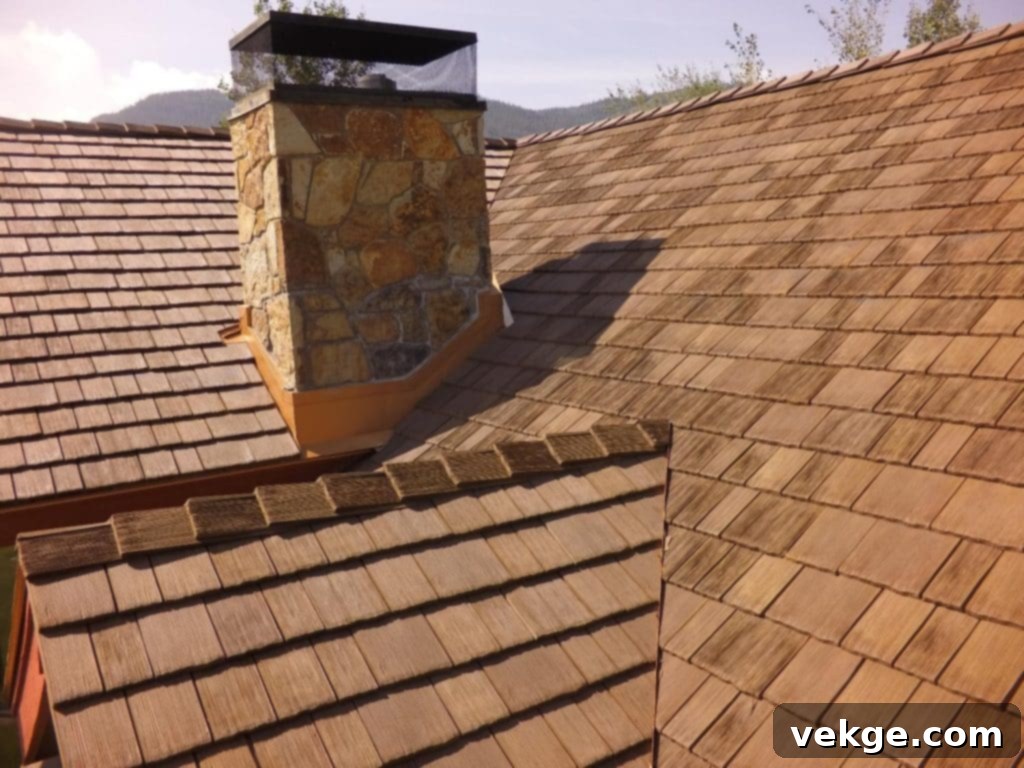
For many, the dream of owning a picturesque home, reminiscent of classic paintings, complete with a warm wooden roof, is becoming a tangible reality in India. Wooden shingles and shakes offer a unique blend of classic appeal and rustic charm, making them a distinctive choice for homes, particularly in regions that embrace natural aesthetics or have cooler climates. These roofs are relatively easy to apply and instantly lend a timeless, aged look that is both sophisticated and inviting.
Before opting for a wooden roof, it is crucial to verify local building codes and regulations, as some areas may have specific requirements or restrictions due to fire safety concerns. When properly installed and maintained, wooden roofing can boast an impressive longevity of up to 50 years. Homeowners can choose between wooden shakes, which are hand-split to provide a more rugged, rustic texture, and shingles, which are machine-shaped and polished for a cleaner, more uniform appearance. Both options offer a unique character that can significantly enhance a home’s curb appeal.
Benefits of Wooden Roofing:
- Organic and Classy Aesthetic: Wooden roofs exude a natural, elegant, and timeless appeal that can significantly boost a home’s visual charm.
- Excellent Weather Resistance: When properly treated and maintained, wood provides good insulation and can withstand various weather conditions, including rain and snow.
- Ease of Installation: Wooden shingles and shakes are generally easy to install for experienced professionals, contributing to quicker construction times.
- Naturally Cooler in Summer: Wood’s insulating properties help keep interiors cooler during the summer months by preventing heat transfer.
- Environmentally Friendly: Sourced from sustainable forests, wood can be an eco-friendly option, as it is a renewable resource.
Drawbacks of Wooden Roofing:
- Higher Installation Cost: The specialized labor and material quality often make wooden roof installation more expensive than many other options.
- Increased Fire Risk: Wood is naturally combustible, making these roofs more prone to catching fire, which often necessitates specific fire-retardant treatments and adherence to local fire codes.
- Susceptibility to Water Damage: Prolonged water logging can lead to degradation, rot, and the growth of mold or mildew, requiring proper drainage and waterproofing.
- Pest Vulnerability: Wooden roofs are susceptible to infestation by termites, carpenter bees, and other insects, demanding regular inspections and pest control measures.
- High Maintenance: To ensure longevity and prevent degradation, wooden roofs require consistent maintenance, including cleaning, treatment, and occasional repairs.
5. Traditional and Architectural Tile Shingles
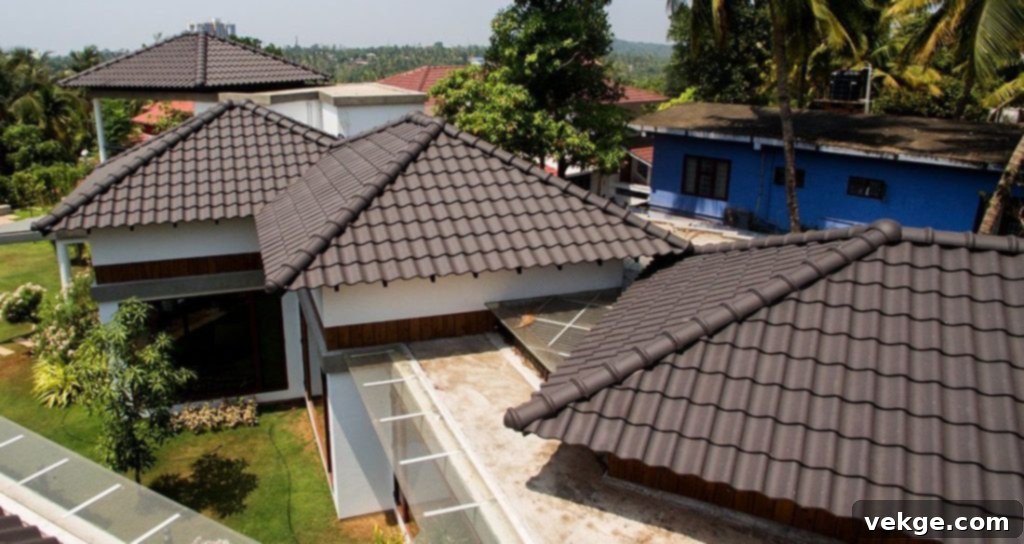
Tiles have long been an epitome of Indian roofing, offering a blend of robust durability and stunning aesthetic appeal. This category encompasses a wide array of options, from traditional terracotta and Mangalore tiles, which are deeply rooted in regional architecture, to modern concrete tiles and architectural shingles designed to mimic the luxurious look of slate or wood. These materials offer multi-dimensional designs, providing builders and homeowners with a vast range of choices to complement any architectural style.
Architectural tiles and traditional clay tiles combine exceptional durability with significant cost-effectiveness over their lifespan. They not only present an aesthetically pleasing roof with rich textures and colors but also offer excellent weather-controlling abilities, providing superior insulation and protection against heat, rain, and cold. Their enduring popularity across various Indian regions speaks volumes about their practical benefits and timeless charm.
Benefits of Traditional and Architectural Tile Shingles:
- Enhanced Aesthetic Appeal: They beautify roofs with a rich, textured appearance, offering a classic and sophisticated look that enhances curb appeal.
- Remarkable Durability: Tiles are known for their extreme toughness and resilience, capable of withstanding harsh weather conditions for decades.
- Exceptional Longevity: High-quality tile roofs can last for more than 30 to 50 years, often outliving the home itself with proper care.
- Excellent Thermal Insulation: Tiles provide superior thermal insulation, helping to keep homes cool in summer and warm in winter, leading to energy savings.
- Fire Resistant: Most tile materials are non-combustible, offering a high level of fire protection.
- Eco-Friendly Options: Clay and concrete tiles are often made from natural, recyclable materials, making them a sustainable choice.
Drawbacks of Traditional and Architectural Tile Shingles:
- Higher Initial Cost: They tend to be more expensive than standard asphalt shingles, both in terms of material and installation.
- Significant Weight: Tiles are quite heavy, which means the underlying roof structure must be robust enough to support the load, potentially increasing construction costs.
- Fragility: While durable against weather, individual tiles can be brittle and prone to breaking if walked on or hit by heavy objects.
- Complex Installation: Installation can be more labor-intensive and requires specialized skills, contributing to higher installation costs.
- Maintenance: While generally low maintenance, individual broken tiles need to be replaced, and moss or algae can grow in damp environments.
Essential Tips Before Choosing the Right Roofing Materials for Your Home
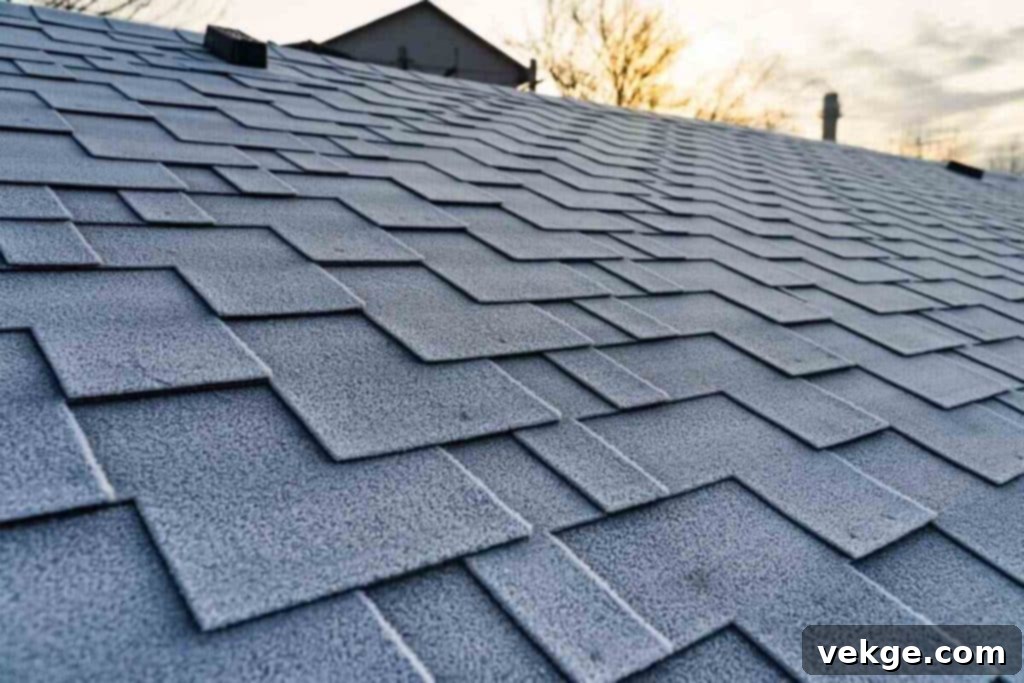
While rooms can be redecorated or maintained with relative ease, a roof is a long-term investment that you will live with for decades. It’s imperative to be precise and careful with your selection, avoiding choices that might offer temporary shine but fade in long-term value. A hasty decision can lead to costly repairs and discomfort down the line. Here are a few comprehensive tips to guide you in making an apt and informed decision for your home’s crown:
- Consider Your Local Climate and Weather Conditions: Prioritize materials that are specifically designed to perform well in your area’s climate. For instance, reflective materials are ideal for hot regions, while robust, water-resistant options are crucial for areas with heavy monsoons or snow.
- Align with Your Architectural Style and Personal Taste: The roof significantly contributes to your home’s overall aesthetic. Choose a material that complements your home’s architectural style, whether traditional, modern, or contemporary, and reflects your personal aesthetic preferences for color, texture, and profile.
- Prioritize Durability, Longevity, and Warranty: Opt for roofing materials that come with a substantial warranty and a proven track record for long-lasting durability. A higher upfront cost for a durable material often translates to lower maintenance and replacement costs over its lifespan.
- Assess Your Home’s Structural Capacity: Ensure that your house’s existing or planned structural capacity can safely support the weight of your chosen roofing material. Heavier materials like concrete or certain tiles require a more robust framing system.
- Establish a Realistic and Desirable Budget: Determine your budget early, considering not just the material cost but also installation labor, necessary structural reinforcements, and long-term maintenance expenses. Balance your aesthetic desires with financial practicality.
- Thoroughly Evaluate Benefits and Drawbacks: For each material you consider, conduct a detailed analysis of its pros and cons in the context of your specific needs, local environment, and lifestyle. This holistic approach will prevent unexpected issues later.
- Consult with Experienced Professionals: Engage with reputable architects, contractors, and roofing specialists. Their expertise can provide invaluable insights into material suitability, installation best practices, and potential challenges.
- Consider Energy Efficiency and Insulation: A well-chosen roof can significantly impact your home’s energy consumption. Look for materials and systems that offer good thermal insulation to help regulate indoor temperatures and reduce utility bills.
- Factor in Maintenance Requirements: Some roofs require more frequent cleaning, treatment, or repairs than others. Choose a material whose maintenance demands align with your willingness and ability to commit time and resources.
For a fuller picture, see how this topic connects with our last discussion in our previous blog post on traditional Indian house designs.
Conclusion: Crafting Your Perfect Indian Home with the Right Roof
The journey of building or renovating a house in India is uniquely exciting, thanks to the vast array of roofing choices available that cater to diverse preferences, regional styles, and practical needs. Each roofing material, whether it’s the robust solidity of concrete, the modern versatility of asphalt shingles, the enduring elegance of metal, the rustic charm of wood, or the classic appeal of architectural tiles, comes with its own distinct set of benefits and drawbacks.
The ideal choice for your home will hinge on a careful evaluation of several critical factors: the material’s inherent properties, its application and installation costs, its effectiveness in controlling your home’s internal climate, and its overall physical appearance. An informed decision, made after thoroughly considering and weighing all these elements, is key to securing a roof that not only looks splendid but also performs impeccably for decades.
The diverse roofing types highlighted in this guide offer more than just a functional covering; they provide a visually appealing look that perfectly blends beauty with homeowner satisfaction. Beyond aesthetics, they stand as a durable and formidable shield, protecting you, your family, and your beloved home from the unpredictable and often severe weather conditions across India. Invest wisely in your roof, for it is the ultimate protector and defining feature of your dream home.
